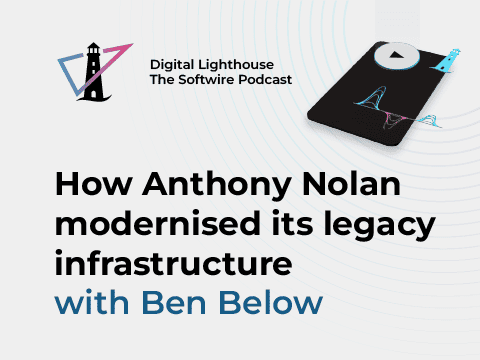
The Post Office scandal serves as an instructive example of what happens when we don’t listen to users, as well as the power of storytelling. This article is dedicated to all the people who’ve had their stories minimised, mistold or manipulated.
Introduction
It’s been called “one of the greatest miscarriages of justice in our nation’s history” and “the biggest single series of wrongful convictions in British legal history“. It is estimated to have directly impacted 700-900 sub-postmasters (independent owner-operators of local Post Offices), with a further 4000 eligible for compensation. The Post Office Scandal has exposed a trail of suffering, marked by financial deprivation, depression, prison, exile, and attempted suicide.
User Researchers try to understand the behaviours, motivations, needs, and attitudes of people. The day-to-day work involves planning research, asking questions, analysing answers and representing the user to multi-disciplinary teams. Think of this as a cross between journalist, detective and lawyer.
As a User Researcher, I found myself drawn to this subject not only for its human impact, but also because I felt a duty to understand its implications professionally and on the civic tech sector. Part of the challenge writing this is the myriad angles: law, politics, corporate culture, media and technology. I actually dip into all those topics as well as bringing my own eclectic perspective drawn from approx.10 years of public service delivery covering International Development, Social Investment consulting, Business Analysis and Product Management.
Because of my background, I’ve written this article in a way that will give you insight into the values and perspective of User Research, using a methodical and structured approach to do this topic justice. I’ll start with a 3-stage analysis to explain why sub-postmasters were not listened to, and in some cases actively silenced. Then I’ll explore the central theme of stories and storytelling that explains why this issue exploded into British life in early 2024. I will finish on the lessons that we need to learn as a sector. These are drawn from the Post Office/Horizon scandal – but relevant for the design and delivery of all digital products and services. I present six ideas to inspire, challenge and transform our sector so that ‘Big IT disasters’ become a thing of the past.

Why were sub-postmasters not listened to, and in some cases actively silenced?
Reason 1: At an individual level, it was easy to characterise sub-postmasters as incompetent or fraudulent
Horizon is a counter-top point-of-sales and accounting system, commissioned by the Post Office. It was launched in 1999, and even in that same year there were known faults[1]. These faults led to accounting errors and missing money, that sub-postmasters were blamed for. One of the most shocking quotes I’ve seen is from an ex-Post Office boss whose instinct about Horizon was “subbies with their hand in the till”[2].
This could have taken hold because of an apocryphal belief that software is a bit like a calculator: it is always right. One of the most tragic aspects to this scandal is that some of the sub-postmasters themselves were fooled by this explanation.
I think there are some essential elements, on a human level, that made this story so convincing:
- It was a simple explanation given what happened.
- It was hard to challenge, because most people don’t have the technical expertise to investigate further.
- It created an ‘other’ group, in this case sub-postmasters, who were easily blamed. All stories must have a villain.
- It was about a group of people who had little power to challenge the accusations levelled against them.
Reason 2: At an organisational level, there was a striking lack of customer (user)-centricity
As you may be aware, Fujitsu was the IT company contracted by the Post Office to create and maintain Horizon. Why didn’t Fujitsu spot and fix issues early? Unfortunately, like with so many other IT projects, Horizon was built by an inexperienced software development team, tackling legacy technology[3] , with no design capability or experience[4]. Software developers working for Fujitsu claim management knew about issues with Horizon, but they were unwilling to completely rebuild core components that created the faults. This quote from a Horizon software developer is illuminating: “It was a prototype that had been bloated and hacked together afterwards for several years, and then pushed screaming and kicking out of the door. It should never have seen the light of day. Never.”[5]
Surely, there should have been someone in either organisation whose job was to represent sub-postmasters, the end-users of Horizon? Twenty years ago, User Researchers didn’t exist – and even if we did it’s unlikely they would have brought us in given the contract margins. But the development and middle-management teams would have known principles for software development which were widely practiced throughout the 90s[6] , and codified in the Manifesto for Agile Software Development 2001[7] . The very first principle of the Agile Manifesto is “Individuals and interactions over processes and tools”.
And what about Post Office management? They claim to have raised all the right questions to the Fujitsu board[8]. A charitable explanation would be that the Post Office had limited financial, technical or operational grip on Horizon itself. Another explanation, alleged by one MP, was that they were operating “some sort of behind-the-scenes deception process which suggests … they were stringing MPs along in order to preserve the robustness of Horizon”[9].
Many public bodies have one nuclear card – to terminate a contract. But they rarely do that because of personal and organisational reputation, exposure to liability, lack of leadership, and risk of leaving service gaps. This was recognised in 2012 with the independent Second Sight report that stated, “there were specific areas where [the] Post Office should consider its procedures and operational support for sub-postmasters“[10].
Reason 3: At a societal level, our “back-up” processes and systems let people down
Most problems in our lives are dealt with at the individual and organisational level. When this doesn’t work, we rely on legal and political processes and institutions. For ease of speaking, let’s call them our back-up options. As citizens of society, we enter a social contract with these back-up options. In other words, we give them power to make decisions and in return they must act in certain ways: fairly, objectively, rule-bound, accountably, and legitimately.
However, the Post Office scandal shows us our back-up options are inherently fallible. Politically, it took two decades for an independent Parliamentary inquiry to be launched. Legally, a change of law in 1999 meant that it was no longer necessary to prove that software was operating properly in order for computer evidence to be admissible in court[11]. In other words, the law now entrenched the belief that software is always right.
One of the most surprising, and worrying, details of this story is that in many ways the Post Office was above and outside both the legal and political system. It is a ‘private prosecutor’ which means the Post Office has special rights as a “combined status, as victim, investigator and prosecutor”[12].

How did this issue become the biggest British scandal of 2024?
This is where the story takes a turn.
Between 1999 and 2023 there were legal judgements, PC Weekly Investigations, Private Eye pieces, reports commissioned, MP debates, a BBC Panorama programme, and a Parliamentary Select Committee.
Lots of important activity, and some high-profile. But 1) Most of those 700-900 sub-postmasters weren’t given compensation or cleared of their convictions 2) The average person, including me, had no idea about this.
That is until ITV’s four-part television drama, Mr Bates vs the Post Office, starring Toby Jones as Alan Bates. Its finale was watched by 10 million people, launching the issue into national consciousness.
Watching Mr Bates vs the Post Office, through the lens of user research
As a user researcher, I spend most of my time trying to understand users’ problems, build empathy and represent users to the wider team of developers and designers. Two core outputs that demonstrate users’ needs are user quotes and user pain-points. There were two powerful moments in the series that show how important quotes and pain-points are:
- When Jo Hamilton (played by Monica Dolan) is on the phone to Customer Support explaining that the figures the system had weren’t right. The emotion is rich: confusion, horror, helplessness. The scene brings to life her interaction with the system, and the painful impact it was having on her.
- Alan Bates’ “we’re just skint little people”. This is the perfect user quote: emotive, short, clear and tells a story itself. Quotes are helpful because they are easy to remember and provide an ‘anchor’ that helps us make sense of more complex concepts.
User quotes are direct statements from people that reflects their experiences, feelings, or perceptions about a product or service.
User pain-points are specific frustrations or issues that people have when interacting with a product or service.
The power of storytelling
This docudrama cut through all the political, legal and technological complexity of the last two decades to tell relatable human stories. ITV found a way of shifting the narrative from incompetent fraudsters to underdogs: defeated and miscarried by the system.
Why was ITV better at capturing the nation’s attention compared to everything that came before? Clearly ITV’s reach into households is a key factor. But scientific research also points to an effect called Neural Coupling. When we listen to a story, our brain synchronises with the teller’s brain. This effect not only allows us to empathise but produces a greater understanding of what is being said. A recent study also highlighted that emotional or narrative stories promote neural coupling more effectively than factual reporting[13].
I can’t help to be inspired about the power of storytelling. Imagine the sort of impact our projects could have if we could capture the audience’s attention in this way. What would happen if we could sync our clients’, external and internal stakeholders’ minds with that of our users?
User research and user-centred design have tried-and-tested approaches to telling good stories. Most common are personas, customer journeys and storyboards. These approaches (we call them artefacts) enable researchers to present detailed, relatable characters and scenarios that resonate with audiences, making the experiences and needs of users tangible and compelling.
What lessons can we learn (particularly as people and organisations that deliver public services)?
Moving from problem to solution space
To illustrate why being in sync with user needs is so important, let’s introduce a quick thought experiment: imagine you are at a cafe, and your table is wobbling. After reading that sentence, there is a high chance your next thought was to put something, perhaps a napkin, under one of the legs. Why? Because humans are problem-solving machines. However, sometimes this instinct isn’t helpful. What if I told you every table was wobbly because of a wood worm infestation. In that case, your course of action would probably be to call an exterminator.
A large part of a user researcher’s role is to build as full a picture as possible of problems that impact users. That way we can make sure we are solving the right problem, in the right way.
Problem statements are short descriptions of a challenge or issue that people face when interacting with technology. Statements are sometimes written from the perspective of the user to promote empathy across the team. You form the ‘Problem Space’ by bringing together and making sense of all your problem statements.
For complex problems, we try and break these down into chunks. We call these chunks ‘problem statements’. Problem statements are useful for two reasons: 1) it’s often easier to understand parts of a problem rather than the whole problem and 2) it’s easier to come up with solutions to smaller problems. This process of moving from problem finding to solution creation is called ideation.
As a user researcher, I can’t help but see the world through the lens of ‘problems’ and ‘solutions’: I will present the lessons learned from that viewpoint, reframing the three reasons from above as problem statements. And then for each problem statement, I’ve given a couple ideas for how these could be solved. Ideation is usually, and best, done in teams so I invite you to think: How would you solve that problem statement?
Ideas for problem statement 1: it was easy to characterise sub-postmasters as incompetent or fraudulent
Idea 1: as individuals working in product/service teams let’s recognise “user research is a team sport”.
This means the process of understanding, empathising and representing the user doesn’t fall on one person, but everyone. Working with user researchers and designers does not remove your responsibility to “put people over processes”. Playing your part as a team member might mean asking yourself:
- Who is this project, product or service for?
- Are they being listened to? How?
- What are the stories being told about them?
- Are there alternative interpretations/diagnoses/stories to tell?
- Who holds the power?
- What are your own biases?
Idea 2: a call-to-action for my research peers: make time to tell better stories.
With all the demands on our time to schedule, plan, conduct and analyse interviews, it can be easy to put less attention into communicating our findings effectively. I get it, I’ve done it. But we are moving into an era where we have new technology at our disposal:
- Tools that help free up our time, so we can focus on storytelling, for example: Microsoft Bookings for scheduling, transcription software for note-taking or virtual whiteboard AI tools to synthesise complex data.
- Tools that help us tell better stories, for example: Microsoft Copilot to create fictional user profiles (i.e. personas), Midjourney to bring these personas to life through pictures, and OpenAI’s Sora to produce videos of user experiences that might even rival the production quality of ITV!
Ideas for problem statement 2: At an organisational level, there was a striking lack of customer (user)-centricity.
Idea 3: create structures and roles that incentivise putting your users first. For example:
- Have a vision statement that explicitly refers to users/people. One of the most striking examples of this is Amazon’s company mission: “Be Earth’s most customer-centric company”. Vision statements like this work best when teams make decisions based on alignment with the broader organisational vision.
- Represent the user at leadership level. I’m interested in the new position of Chief Customer Officers (CCO) seen at Microsoft, HubSpot and Mazda and others[14]. CCOs are c-suite executives responsible for championing users and empowering their organisation to design and deliver more valuable user experiences.
- Represent the user at Board level. Boards traditionally represent shareholders, and hold leadership and the executive branch to account. Customer Board members[15] or sub-committees[16] represent the interests of customers and help guide an organisation to be more user-centred. I was excited in 2018 to see Theresa May attempt to bring in reforms to enforce consumer and even worker representation at Board-level, but these were eventually quashed.
Idea 4: invest in your insight-generating teams.
‘Insight’ here refers to deep understanding and information about your users and customers. ‘Generating teams’ is intentionally vague and broad – because the point is that everyone in an organisation should seek to generate insights about users and customers. A core part of a researcher’s role is to generate insights, but don’t look just at us. Designers, tech leads, customer support, business intelligence, strategy and other operational teams all can generate insights. More innovative organisations have broken these siloes and created central Insights Generating Functions (IGF) with notable examples being Unilever[17] and IBM[18]. Of course, investment could be smaller scale – instead of investing in (expensive) people, you can buy software that makes research more efficient or create better knowledge management using simple SharePoint features[19].
Insights Generating Functions (IGFs) are centralised teams that aim to collect, analyse, and integrate valuable insights from user data, market trends, and customer feedback to inform strategic decision-making and improve products or services.
I believe an IGF at the Post Office may have helped in two ways. The first is to drive an evidence-led approach. Instead of solely relying on information from Fujitsu, the Post Office could have required open sharing of information and data for independent investigation. Secondly, it could have provided Post Office executives with a broader understanding of the situation. By triangulating findings from different sources, let’s say: a bug log, customer support metrics and a strategy team’s SWOT analysis – it may have prompted alternative stories or explanations for what was going on.
Ideas for problem statement 3: At a societal level, our “back-up” processes and systems let people down.
Idea 5: the principles and approaches of user-centricity work for public policy, not just technology.
Generally, the more that citizens are involved in the decisions that affect them, the better the implementation and attitudes are towards that policy. Take Citizen’s Assemblies, which are effectively like Jury duty but instead of a legal case, randomly chosen citizens deliberate on public and social policy. Citizen’s assemblies were cited as one of the key factors for Ireland’s recent abortion referendum[20].
Idea 6: let’s agree to roll back on our blind trust in technology and its infallibility, and the enshrining of that belief in legal or political processes.
The dawn of Generative AI could pose far greater risks than the technology used by Horizon. Hallucinations generated by AI have the potential to have far greater reach, are far more convincing and much harder to understand and critique. As such, we need new and robust ways to challenge accepted beliefs or ways of working. New ways to listen and amplify the stories of “skint little people”.

Call to action
In the wake of the Post Office scandal, we have seen the profound impact that entrenched narratives can have on people. As we reflect on the lessons learned, let us commit to fostering user-centricity at individual, organisational and societal levels.
This appeal is perfectly expressed by one of my favourite storytellers, Neil Gaiman: “We need individual stories. Without individuals, we see only numbers. A thousand dead, a hundred thousand dead… With individual stories the statistics become people… Fiction allows us to slip into other heads, other places, and look out through our eyes” American Gods
Epilogue
This particular story could never have a happy ending. There is too much incalculable suffering that cannot be reversed. However, there does seem to be important progress. On 13th March 2024, the UK Parliament introduced The Post Office (Horizon System) Offences Bill[21]. This bill, although there is some controversy around it[22], seeks to broadly exonerate sub-postmasters and provide them with compensation.
Whilst I welcome some restorative action, I worry it’s not even beginning to address the societal, organisational and individual reasons that caused this scandal. Injustices are a fact of society. But is it best to use an esoteric tool such as a Prime Minister’s pardon? We need consistent and robust measures to address the root causes, so that future injustices are prevented.
If you are interested in more advice and further reading about Storytelling please see my personal medium.
1 https://www.independent.co.uk/news/uk/post-office-fujitsu-horizon-scandal-b2481391.html
2 https://www.theguardian.com/uk-news/2024/apr/12/ex-post-office-boss-alan-cook-wrote-of-subbies-with-hand-in-the-till-inquiry-hears
3 https://inews.co.uk/news/what-is-capture-second-flawed-it-system-post-office-convictions-2861272
4,5 https://www.computerweekly.com/news/252496560/Fujitsu-bosses-knew-about-Post-Office-Horizon-IT-flaws-says-insider
6 https://en.wikipedia.org/wiki/Agile_software_development#cite_note-AgileManifesto-4
7 Published in 2001, the Agile Manifesto were a set of values and principles derived from, and underpinned by, a broad range of software development frameworks, including Scrum and Kanban. https://agilemanifesto.org/
8 “Letter from Paula Vennells on Post Office and Horizon”
9 https://www.theguardian.com/business/2024/apr/10/former-mp-tells-inquiry-post-office-was-operating-behind-scenes-deception-process
10 https://committees.parliament.uk/publications/1621/documents/15462/default/
11 https://www.theguardian.com/uk-news/2024/jan/12/update-law-on-computer-evidence-to-avoid-horizon-repeat-ministers-urged
12 Parliamentary Select Committee: https://publications.parliament.uk/pa/cm5801/cmselect/cmjust/497/49704.htm
13 https://www.pnas.org/doi/full/10.1073/pnas.1008662107?trk=public_post_comment-text
14 https://en.wikipedia.org/wiki/Chief_customer_officer
15 https://www.aspirehousing.co.uk/aspire-life/become-a-customer-board-member-with-aspire
16 https://www.productplan.com/glossary/customer-advisory-board/
17 https://hbr.org/2016/09/building-an-insights-engine
18 https://www.oreilly.com/radar/exploring-the-process-of-insight-generation/
19 https://www.bizportals365.com/blog/knowledge-base-in-sharepoint
20 https://rebeltoolkit.extinctionrebellion.uk/books/citizens-assemblies/page/quotes-about-citizens-assemblies
21 https://publications.parliament.uk/pa/bills/cbill/58-04/0181/230181.pdf
22 https://www.theguardian.com/uk-news/2024/mar/13/what-is-the-post-office-horizon-bill-and-why-is-it-controversial


